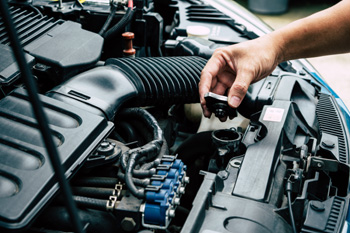Modern vehicles are complex machines equipped with advanced systems designed to enhance performance, safety, and convenience. When something goes wrong, a full vehicle diagnostic check is often the first step to identifying and resolving the issue. If you’re unsure what this process involves, here’s a detailed guide to help you understand what to expect and why it’s important.

What Is a Vehicle Diagnostic Check?
A diagnostic check uses specialized equipment and software to evaluate your vehicle’s systems. It’s designed to detect issues ranging from engine performance problems to electrical system malfunctions. With most modern cars having onboard computers, diagnostics can provide precise insights into what’s causing the issue.
When Do You Need a Diagnostic Check?
You might need a diagnostic check if:
- The check engine light or other warning indicators come on.
- You notice unusual sounds, smells, or performance issues.
- Routine maintenance reveals potential underlying problems.
- You’re buying a used car and want to ensure it’s in good condition.
What Happens During the Diagnostic Process?
- Connecting to the Diagnostic Tool
The mechanic connects a diagnostic scanner to your vehicle’s Onboard Diagnostics II (OBD-II) port. This port, usually located under the dashboard, allows the tool to communicate with your car’s computer system. - Data Retrieval
The scanner retrieves error codes stored in the vehicle’s computer. Each code corresponds to a specific issue, such as a misfiring engine cylinder, a failing sensor, or an electrical fault. - Interpreting Error Codes
The mechanic interprets these codes to determine the root cause of the problem. While the codes provide a starting point, additional testing may be necessary to confirm the diagnosis. - Visual and Manual Inspections
Alongside the computerized check, the mechanic may conduct a manual inspection. For example, they might examine the engine, hoses, belts, or electrical wiring for visible damage or wear. - Functional Testing
Some issues require functional testing. For example, if the brakes are acting up, the mechanic may inspect the braking system and test it to verify the problem.
Common Systems Examined During a Diagnostic Check
- Engine and Transmission: Performance and efficiency issues.
- Exhaust System: Problems affecting emissions and fuel economy.
- Braking System: Malfunctions that could impact safety.
- Electrical System: Battery, alternator, sensors, and wiring issues.
- Airbags and Safety Systems: Ensuring all safety features are operational.
How Long Does It Take?
The time required varies based on the issue’s complexity. A basic scan might take 30 minutes, while a detailed inspection and functional testing can take several hours.
Why Is a Diagnostic Check Important?
- Precision: It pinpoints the exact problem, saving time and avoiding unnecessary repairs.
- Prevention: Identifying minor issues early prevents costly repairs later.
- Safety: Ensures your vehicle is safe to drive.
What Happens After the Check?
Once the diagnostic is complete, the mechanic will:
- Explain the findings in detail.
- Provide an estimate for repairs if needed.
- Recommend maintenance tips to avoid similar issues in the future.
Conclusion
A full vehicle diagnostic check is like a health check-up for your car. It ensures your vehicle runs smoothly, safely, and efficiently. Whether you’re dealing with a warning light or suspect an issue, a diagnostic check is the first step to keeping your car in top condition.
If you’re experiencing car trouble or want to schedule a routine diagnostic check, contact us today. Our expert mechanics are here to help you get back on the road with confidence!
Lim’s Auto Body is a full service auto body and mechanical repair shop locally owned and operated in Largo, Florida. For more information, go to our web site www.limsautobody.com or call (727) 422-3232.
